Nowadays most brands understand the necessity of reputation monitoring. Simply put, this is keeping an eye on any online mention of your brand to evaluate how your customers, potential customers and no-longer-customers see you.
In today’s digital world, the minute someone is unhappy with a product or business, they post about it on the Internet – typically through social media – which is then read, shared and/or commented on across the globe. Because 83% of consumers say that personal recommendations make them more likely to purchase a product, and 88% of consumers trust user reviews as much as personal recommendations, if someone criticizes your customer service or boycotts your product or brand, you can expect your reputation to take a major hit.
But even if a brand is monitoring their online reputation, are they doing enough to benefit from the data they collect?
Here are three steps to creating a more effective reputation management strategy that will benefit you on many levels, beyond social media customer service.
Step 1: Set Up a Collaborative Reputation Management Routine
A solid reputation management strategy starts with getting organized. You need to set up a reputation monitoring routine that will be easy to use and collaborate on.
Collaboration is at the heart of a successful reputation management strategy. Different brand mentions may require attention from different teams and departments:
- Most of the mentions should be addressed by social media managers who are at the forefront of any brand’s online reputation. They need to address customers’ concerns immediately, and if they don’t know how exactly to help, they need to do their best to move this conversation away from the public discussion. Invite your customers to DM or email you and continue things going from there.
- Your customer support team is another department that should remain on top of those customer interactions to know what’s behind each customer’s issue.
- Your content team should keep an eye on questions that social media managers are answering and whether these questions should be included into an on-site knowledge base.
- Your web development team should be notified of any bugs or usability issues that users report online.
- Your product development team should know how your product is losing or winning when it is being discussed online and compared to your competitors.
- Your sales team should be aware of any possible leads that your social media managers are coming across on all kinds of channels.
Because digital marketing has been going omnichannel, reputation management should be a collaborative effort that every member of your team can participate in.
Dive Deeper: Omnichannel Marketing: Using the Content Sprout Method to Overcome Info Overload
A) Treat Social Media Messages as Tasks
SproutSocial, a social media management and optimization platform, comes with a powerful collaborative tool set that includes delegation, customer support integration and task prioritization:
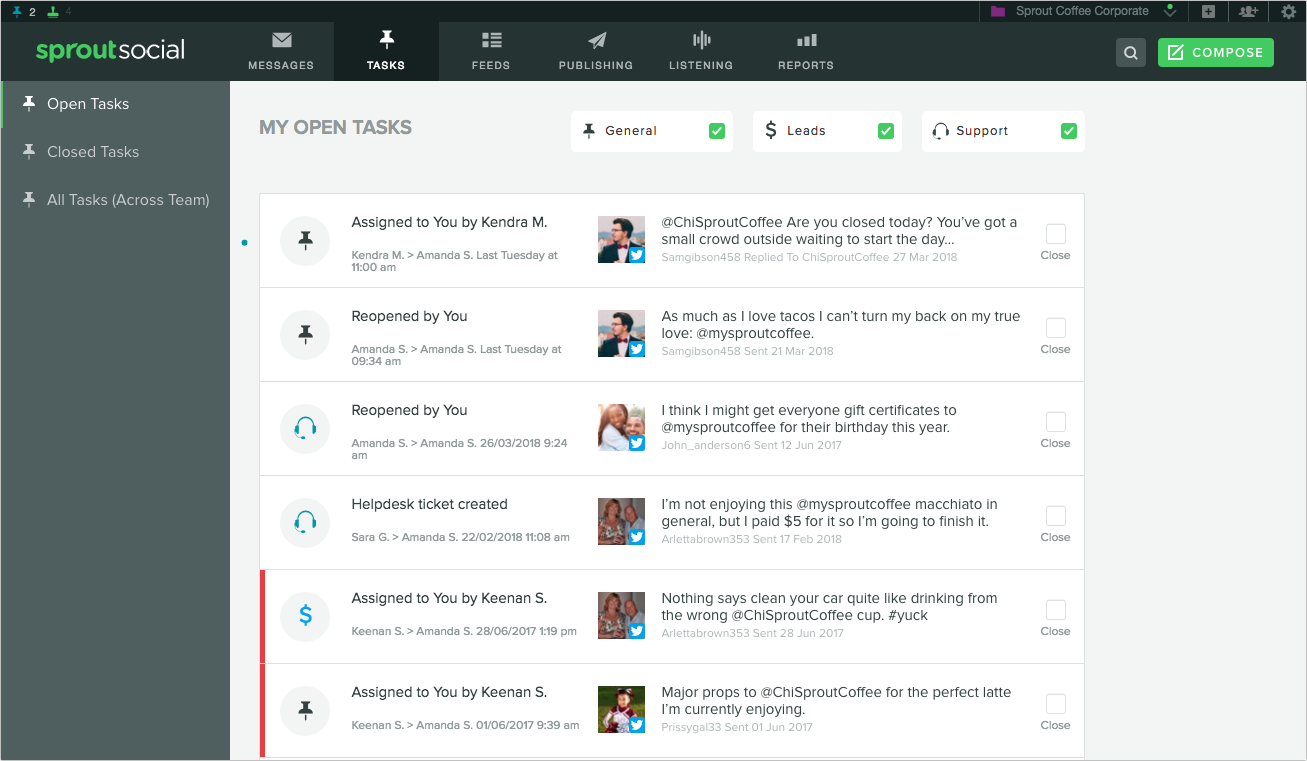
If you receive a question or feedback that is better addressed by someone else, this tool makes it easy to assign the message as a task for another team member.
Dive Deeper: The Beginner’s Guide to Crafting a Highly Effective Social Media Strategy in 2019
B) Scale Social Media Customer Support with AI and Automation
Scaling allows you and your team to focus on more creative tasks. While your online interaction cannot be 100% automated, thanks to artificial intelligence, you can make the process much more productive.
Embracing chatbot marketing is one way to do that. You can install a smart bot on your page and your site and teach it to help your customers whenever they reach out via chat. Because it works 24/7, it can respond immediately even when your customer support team is offline.
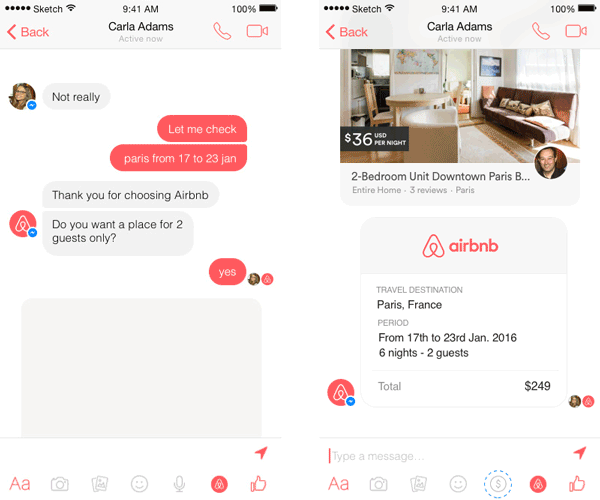
Integrating smart automation into your reputation monitoring strategy is another option here, and tools like SentiOne make it easy. The platform allows you to integrate all your online channels into one dashboard – i.e. omnichannel customer service – to address customer requests instantly:
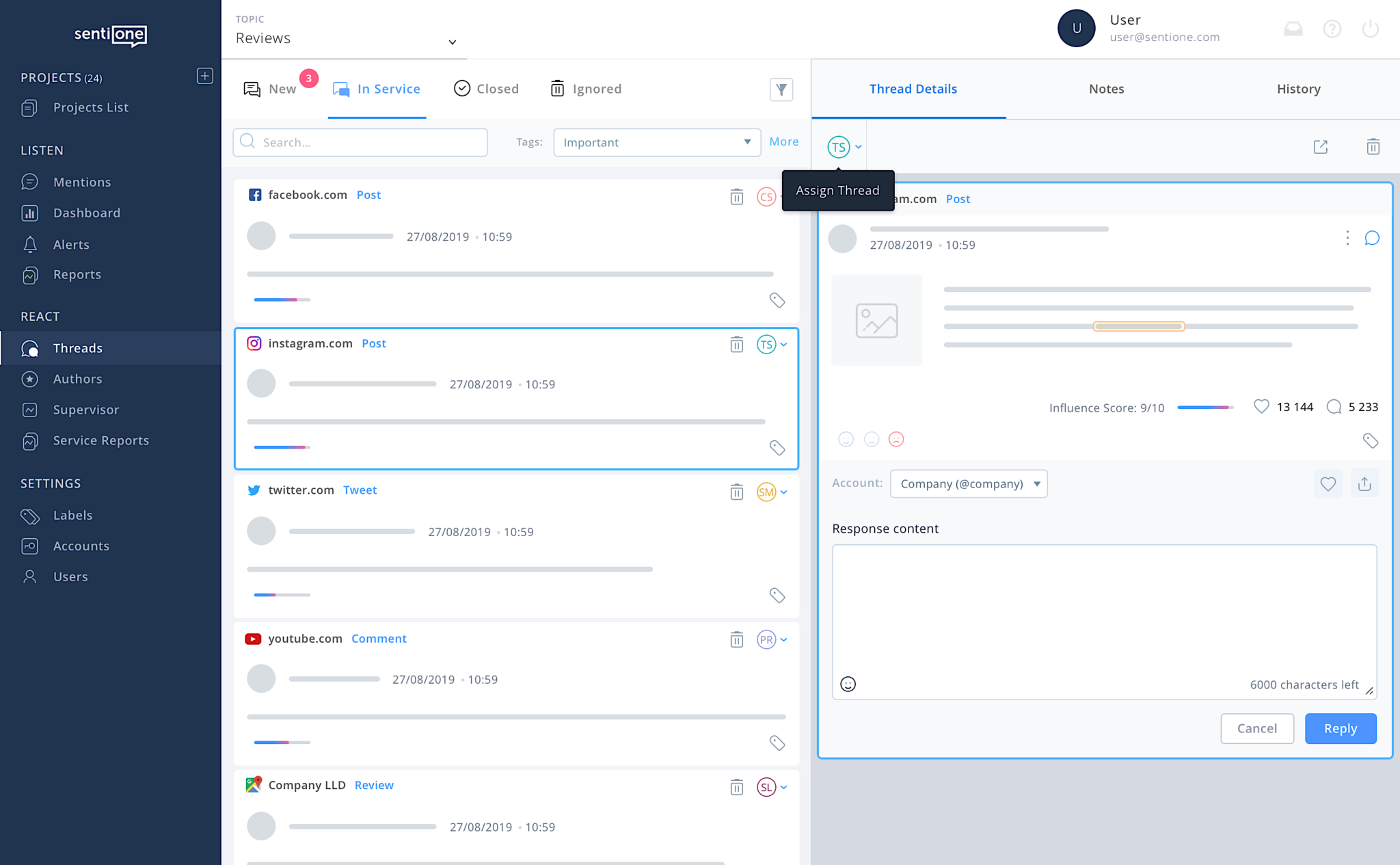
SentiOne lets you segment customer requests into different categories and assign automatic routing to selected teams: marketing, social media, customer service, technical support, etc. On top of that, the platform uses artificial intelligence to suggest responses based on query processing from historical data. This saves lots of time and improves your team efficiency:
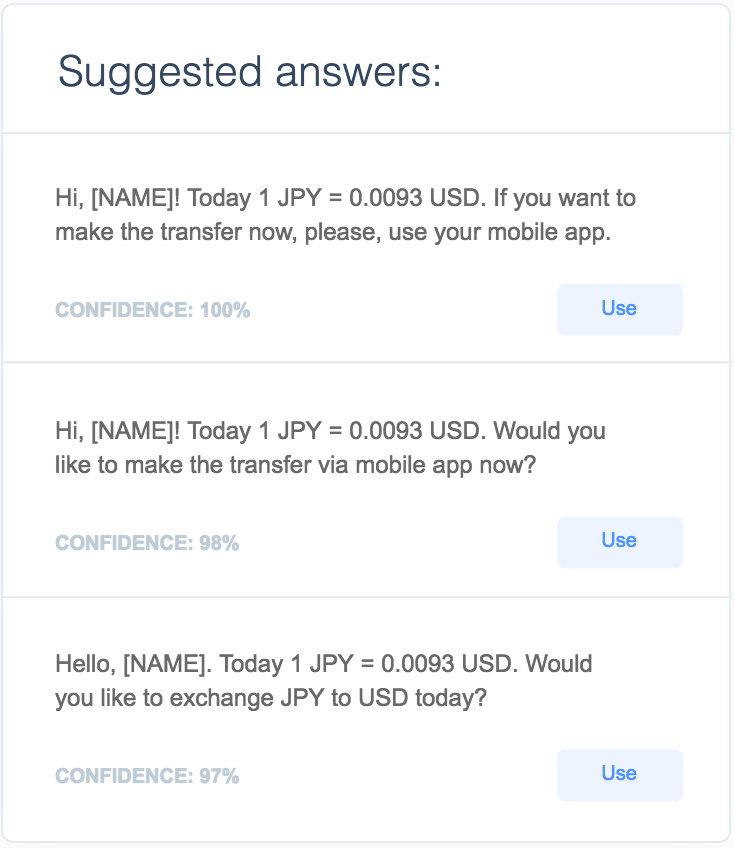
Dive Deeper:
- Why Chatbots Are a Must-Have for Businesses (and How to Build One!)
- 5 Trends that Will Define the New Vision of Marketing Automation
- 10 Easy Ways to Get Started with Marketing AI (Artificial Intelligence)
Step 2: Fix On-Site Issues
While you cannot control what’s going on online, you can control your own site, so start there. Looking at some of the largest reputation management scandals (like the Target data breach or the Facebook/Cambridge Analytica scandal), many of them could very well have been prevented by fixing on-site issues. Moreover, most of the businesses could have seen those coming.
Dive Deeper: How to Fix 15 Common On-Site Technical SEO Issues
A) Web Accessibility
More and more reputation crises result from businesses’ inability – including Domino’s Pizza – to provide a smooth online experience for their disabled audience. In fact, last year the amount of accessibility-related lawsuits and consequent reputation scandals tripled as compared to the previous year:
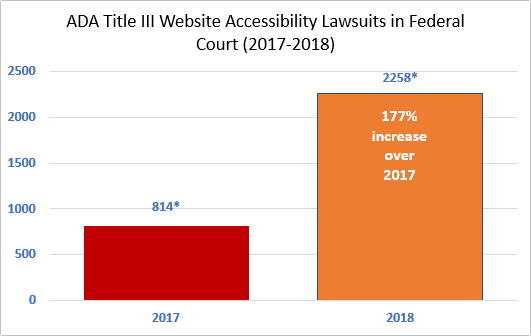
Making your site accessible means allowing millions of people around the world who live with impairments to become your customers and brand advocates.
The good news is that fixing all kinds of usability and accessibility issues can actually be both automated and affordable. One innovative tool that is easy to install and run is accessiBe; it uses artificial intelligence to learn how your website works as well as how to fix any accessibility issues without breaking its look or functionality:
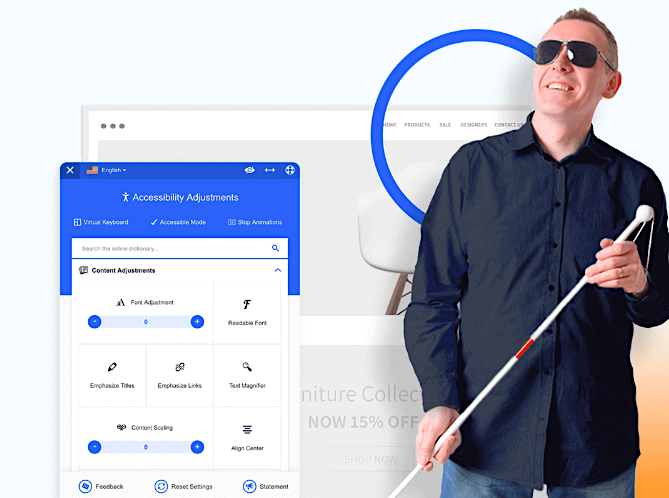
It’s an easy and affordable way to ensure that your accessibility issues are quickly fixed and constantly monitored.
B) Online Privacy
Privacy-related issues should also be taken control of. Since the General Data Protection Regulation (GDPR) took effect in May 2018 in the European Union, online privacy has become one of the biggest challenges that businesses have been facing. Google, for instance, was issued the biggest fine in GDPR history so far for privacy violations. And since most Internet publishers deliver content and collect leads globally, the regulations affect almost every digital and SaaS business.
If you cannot afford a lawyer to oversee your privacy regulation compliance, you should at least think twice before using your email list outside of what your subscribers think you are going to use it for. In addition, having a privacy policy helps. Here’s a free generator that helps businesses create a pretty standard privacy policy for your site.
Dive Deeper:
- The Email Marketer’s 4-Step Guide to GDPR Compliance
- How Poor Website Security Negatively Impacts SEO Rankings
C) Downtimes
Finally, overall website performance is another threat to online reputation. A site’s downtime tends to result in lots of angry tweets which can blow up fast. Addressing the issue quickly and replying to social media messages will help you prevent a crisis and even turn those users into loyal brand advocates.
Keeping your site performance under control is also quite doable. It can be as simple as creating a Pingdom account and looking out for those instant notifications that alert you of a sudden site downtime. Pingdom sends instant email and text alerts as well as integrates into Cyfe, so you and your team members will always be on top of everything.

There are also multiple WordPress plugins available that allow you to oversee and fix performance problems.
D) Outdated and Irrelevant Content
Any website that has been around for more than two years is likely to have loads of outdated content. When it comes to reputation management, keep an eye on the following types of pages:
- About Us – Is your team still the same?
- Contact Us – Have your phone number, address, email, etc. changed?
- Press page – Keep this page updated with new mentions to prevent it from looking stale.
- Company-related blog updates – Do you have any announcements that no longer make sense?
To keep your brand-driven content continually updated, try using a tool like Narrato to make developing a consistent content marketing strategy much more scalable. Narrato uses artificial intelligence to match writers to businesses which makes building a team much easier:
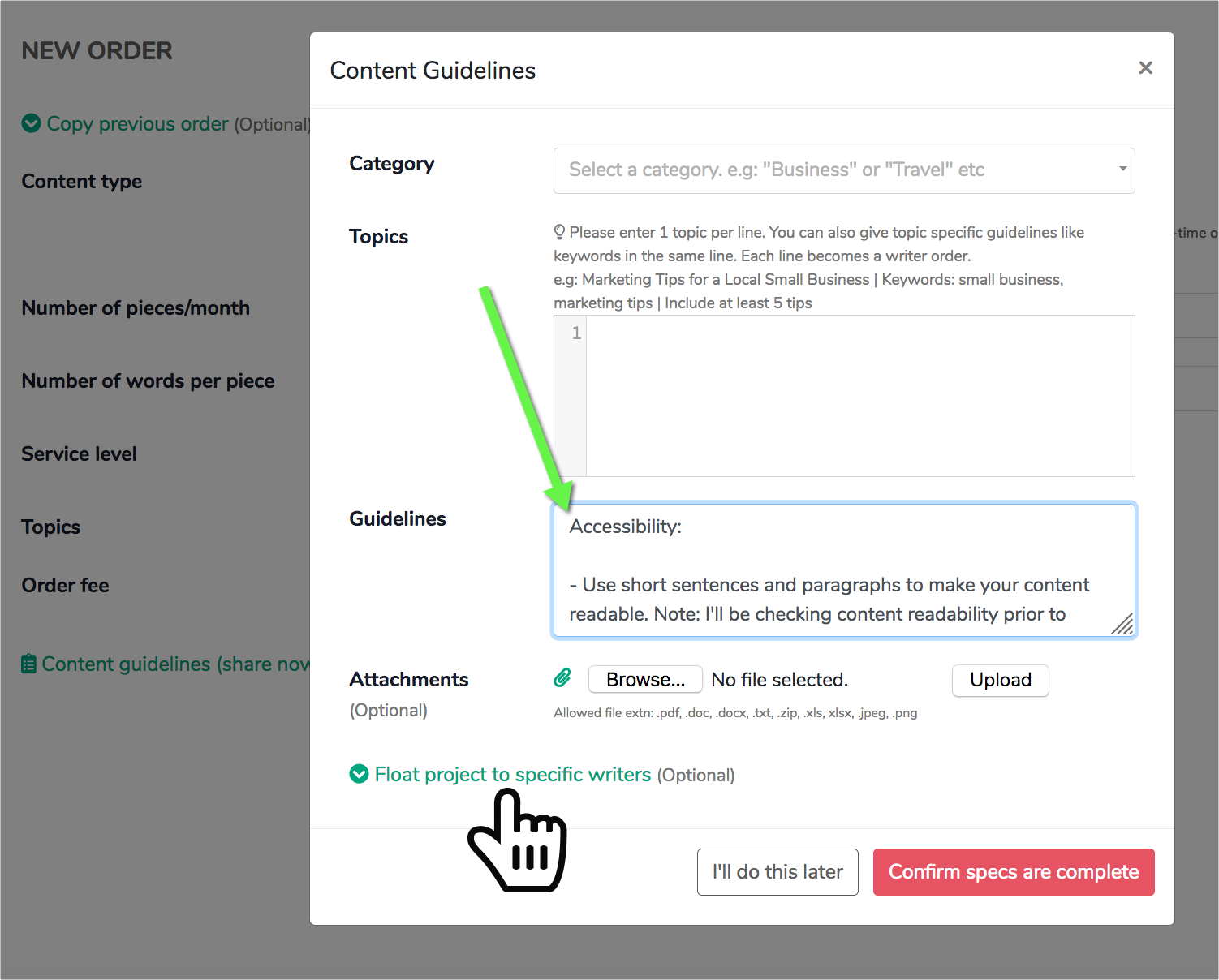
Dive Deeper:
- 22 Companies Dominating the World With Content Marketing Campaigns
- How to Use Amazon Reviews for Content and Product Development
- How to Build a High-Performance Content Marketing Strategy
Step 3: Keep an Eye on Competitors
Finally, monitoring your online competition offers you a ton of insight into how to avoid their mistakes or prevent similar reputation problems. On top of that, if you have a smaller and/or newer brand, your competitors’ unhappy clients will tell you exactly what you need to do to identify and cover a niche gap and gain a competitive advantage.
There are various tricks to monitor what really matters.
A) Sentiment-based Monitoring
On Twitter, you can set up monitoring for [competitor 🙁 ] search using Tweetdeck or Cyfe. This will help you see all the unhappy customers discussing your competitor’s fails:
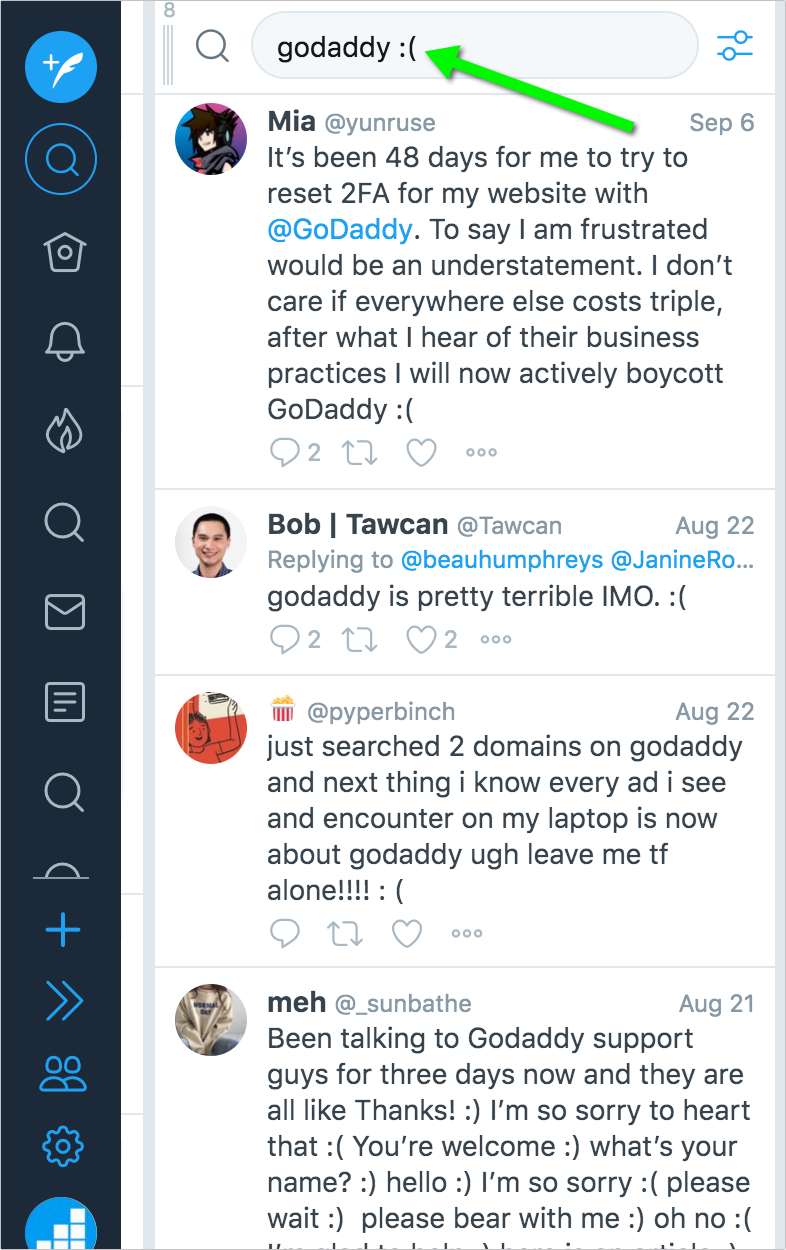
You can also do a direct search for unhappy customers’ tweets by using the formula [to:company 🙁]. For example:
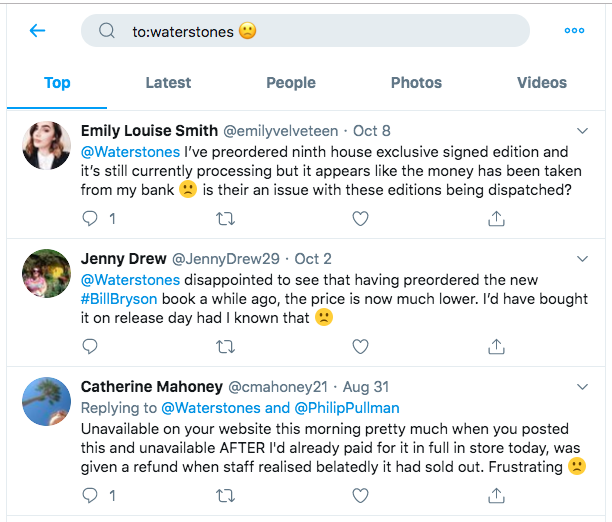
This will help you and your teams on many levels, including:
- Product development and marketing angles: Identifying gaps which your product may be able to cover (missing features that everyone is complaining about).
- Customer onboarding: Winning over those unhappy customers by replying to them and pointing to where your product can help instead.
B) Brand-focused Questions
Learning what your competitors’ customers are asking helps you create a more comprehensive knowledge center. This will ultimately turn your brand into a destination where your current and potential customers will be able to find all the answers to their questions.
Text Optimizer has a neat little feature that allows you to research questions around any search query. Just pick your biggest competitor to discover where they are lost and how you can help their customers:
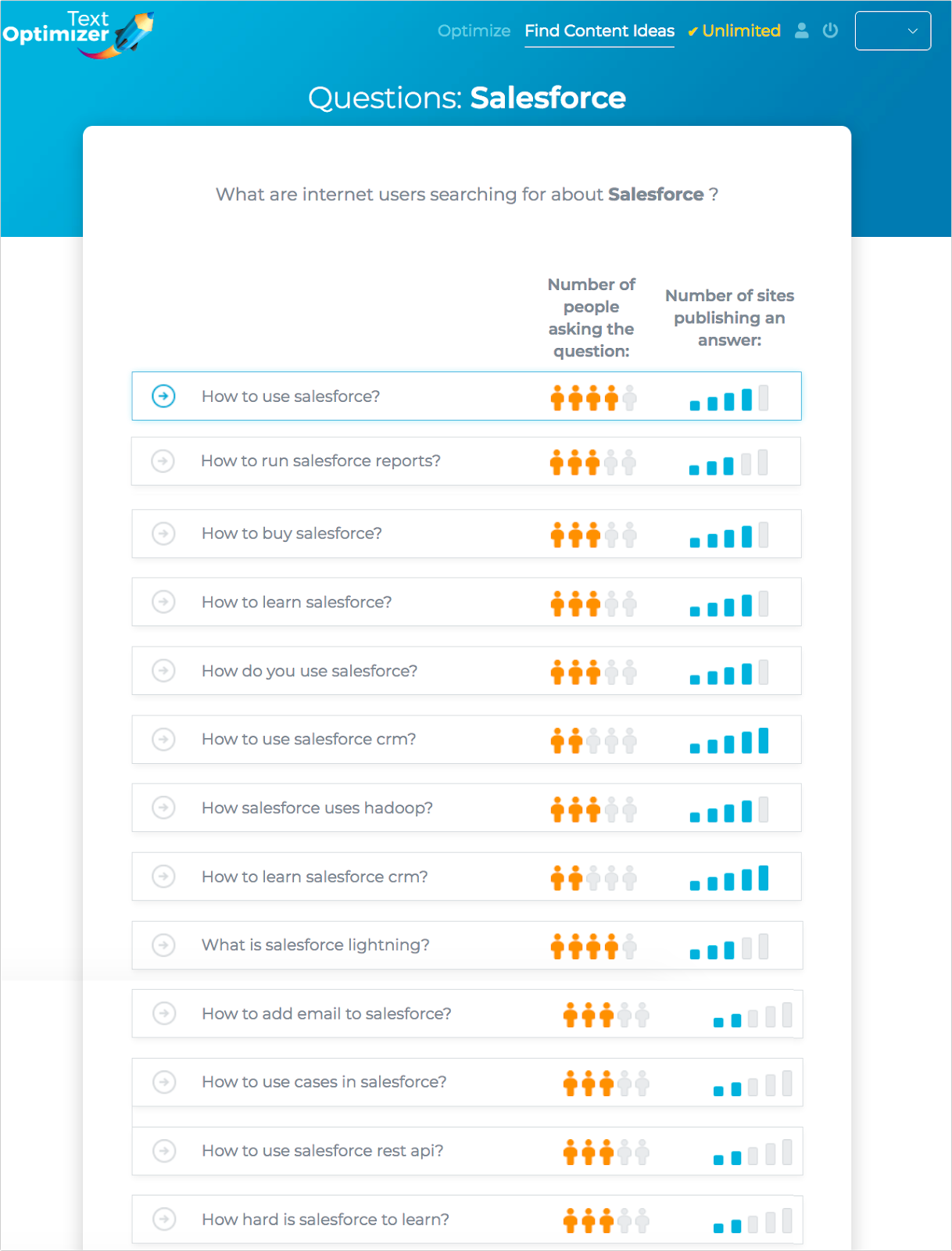
You can use this data to:
- Build a resourceful knowledge center that covers similar questions around your brand (you may want to use FAQpage-structured data as Google recommends)
- Create a better, more detailed and more resourceful About Us page
You can also use Google’s “People Also Ask” boxes that come up for your competitor’s branded search to find even more questions to cover:
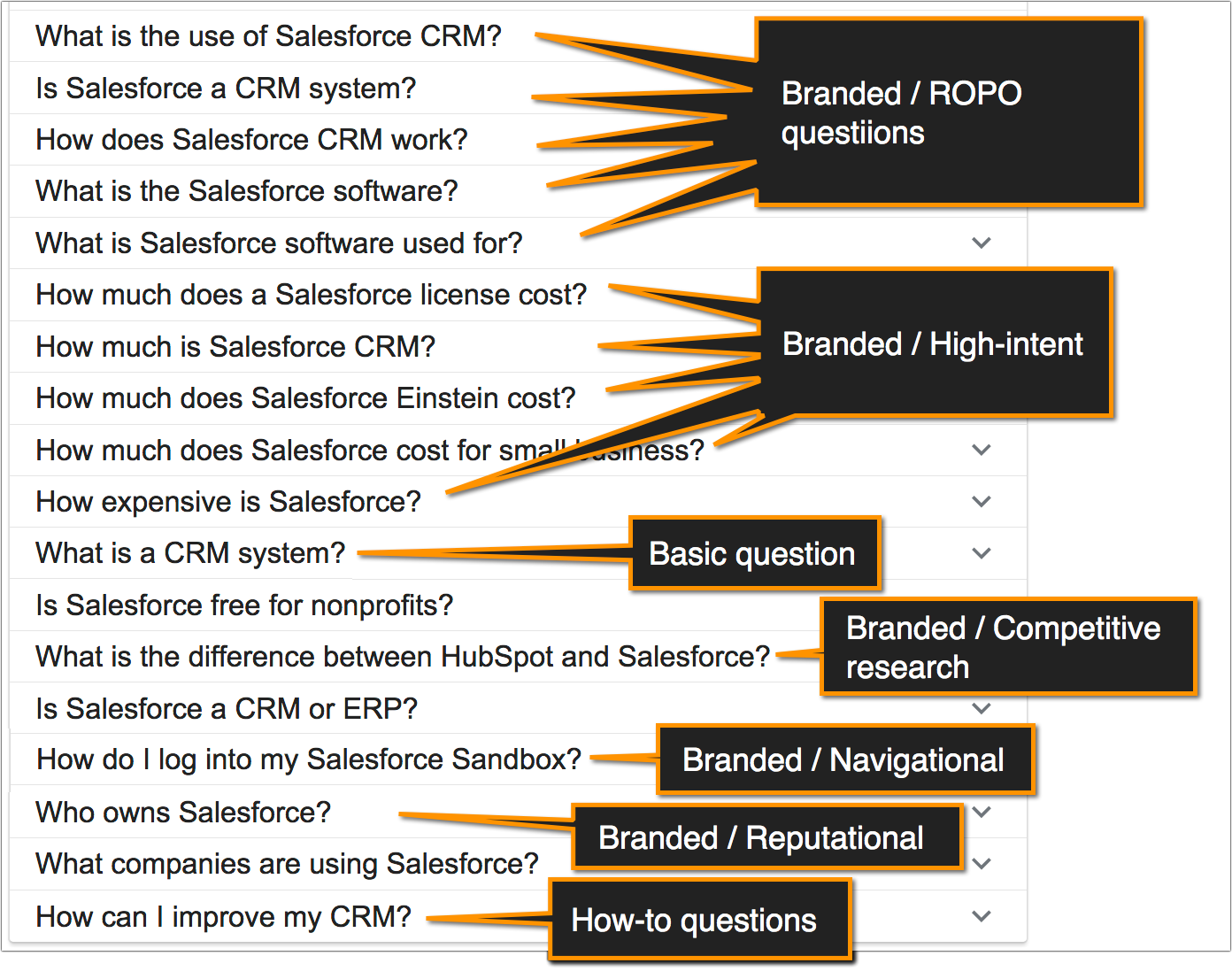
Keeping an eye on your competitors, especially their unhappy customers and competitor-focused questions, will help you develop a better product as well as predict and prevent similar reputation scandals for your own brand.
Dive Deeper:
- How to Uncover Your Competitors’ Content Strategy
- How to Perform Marketing Competitor Analysis (+ 6 Best Tools Comparison)
- 10 Tools to Monitor Your Competitors’ Growth and Hack Their Strategies
Bonus: Create a High-Level Monitoring Dashboard
As you can see, there are a lot of pieces to this puzzle, and to keep them all organized, you need an easy way to keep an eye on everything.
For higher-level monitoring, consider creating a separate project management dashboard inside Cyfe. The dashboard can include multiple widgets and gives you a bird’s eye overview on how your various teams collaborate on reputation monitoring and management. Your Cyfe dashboard could include:
- Zendesk widget to monitor your latest customer interactions and customer support team stats
- Recent reviews (using Grade.Us widget)
- Trello widget to keep an eye on recent tickets
- Your content team’s to-do list, including collected questions to cover (use the Google Spreadsheet widget to see what your team is working on)
- Pingdom widget to monitor your site performance, etc.
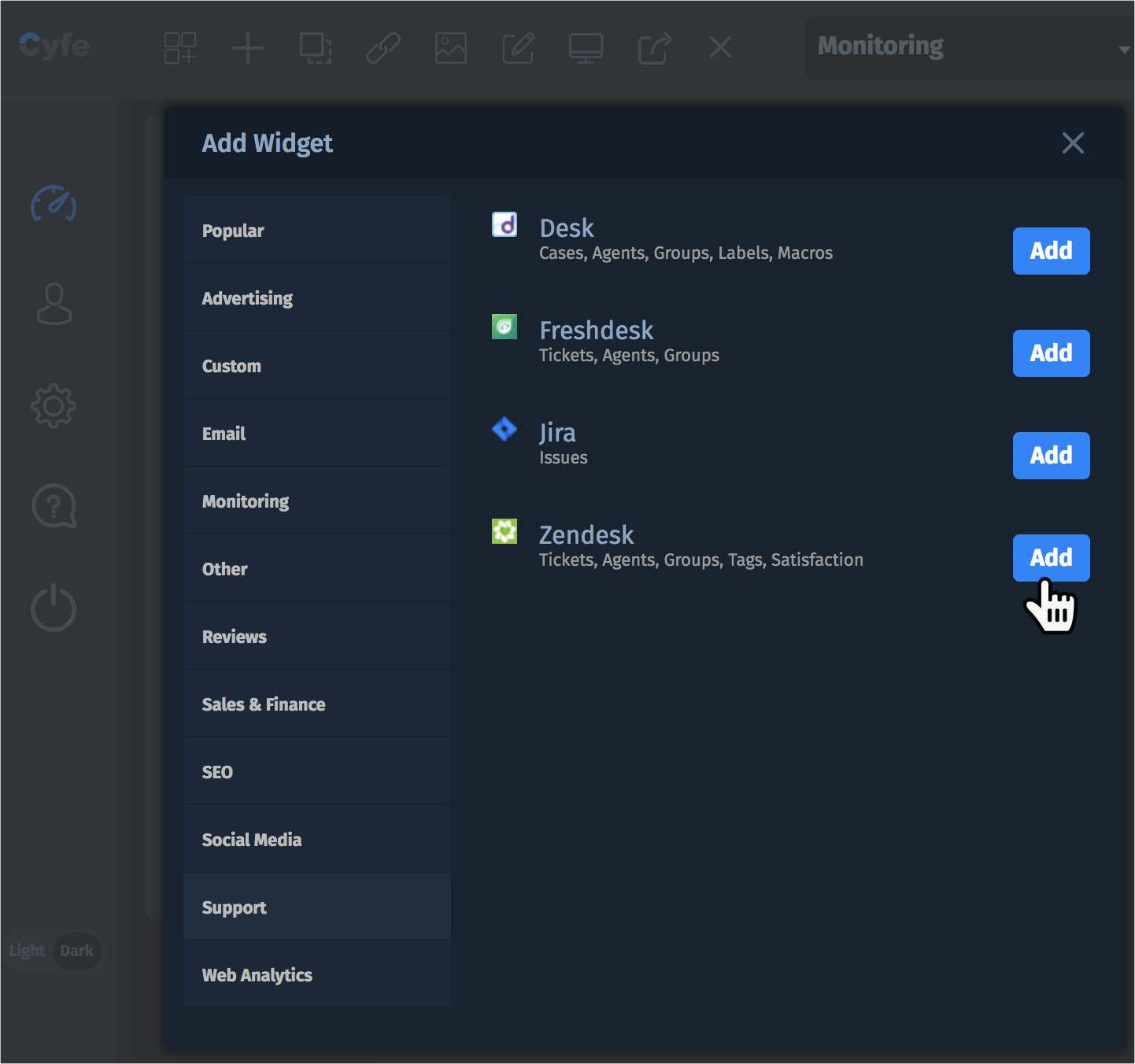
Takeaways
Creating an effective reputation management strategy is more than setting up social media brand monitoring:
- It should include all your teams and departments and allow each to use the collected data to improve and expand their work flows.
- You need to fix on-site issues that often result in reputation management crises. Preventing is easier than fixing!
- You need to monitor your competitors so you can avoid their mistakes as well as develop better products.
- Finally, creating a high-level project management dashboard will allow to keep an eye on everything and ensure that tasks are recorded and done!
The steps and tools above will help you create a more effective brand management strategy.




